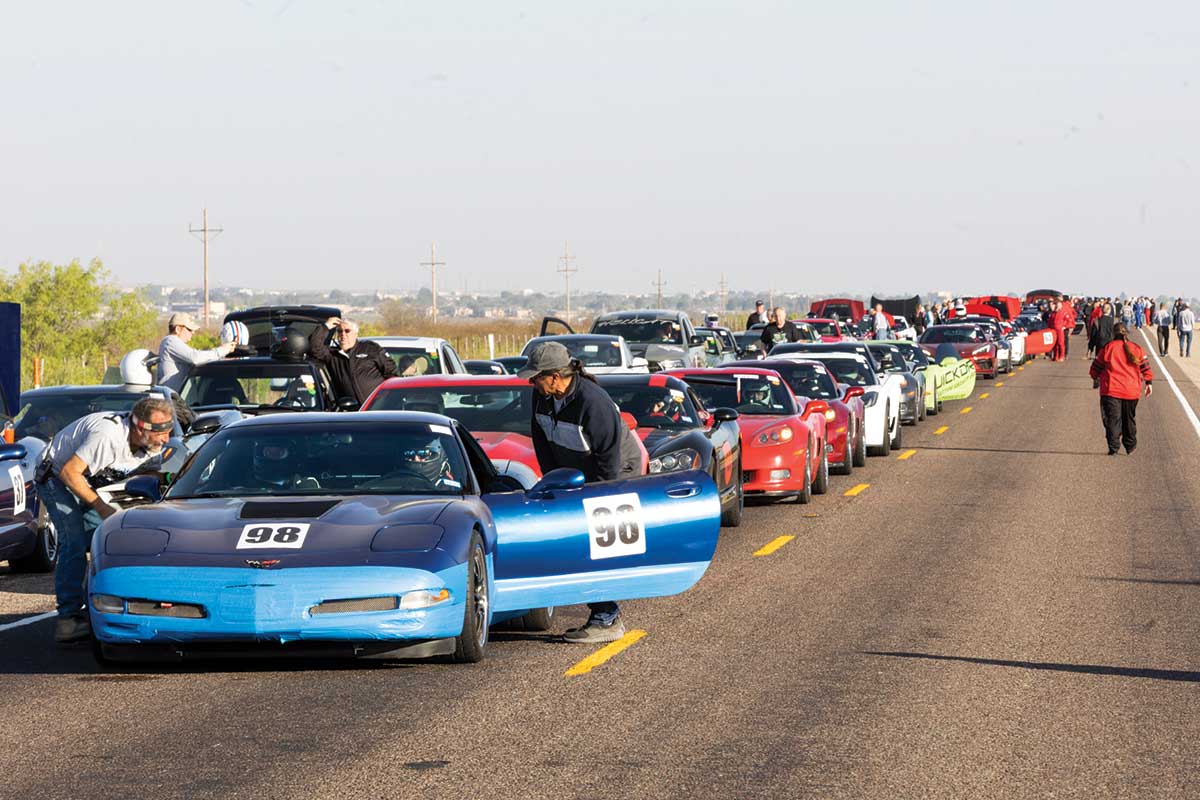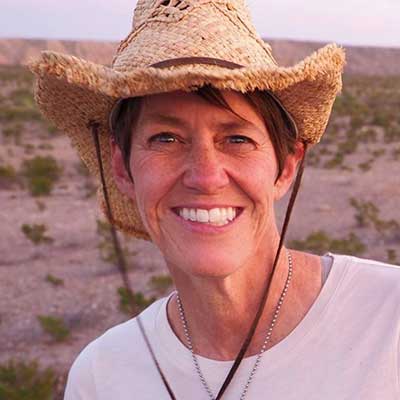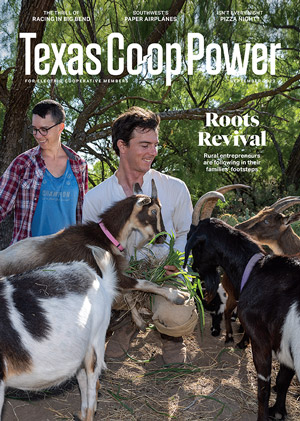The April edition of the 2022 Big Bend Open Road Race starts with a warning to drivers: Buzzards are perched on a bridge along the twisty course.
The big carrion-eating birds—along with blown tires, overheated engines, assorted roadkill and the occasional wandering wildlife—pose a real threat during the race, which unfolds down a 59-mile stretch of mostly two-lane asphalt that slices through the desert between Fort Stockton and Sanderson in far West Texas.
Old-timers will tell you about the time a buzzard exploded through the windshield of a car (no one was hurt, but the bird didn’t fare well) or when wayward javelinas strolled onto the road. There have been blowouts and skid-offs but, so far, no serious wrecks.
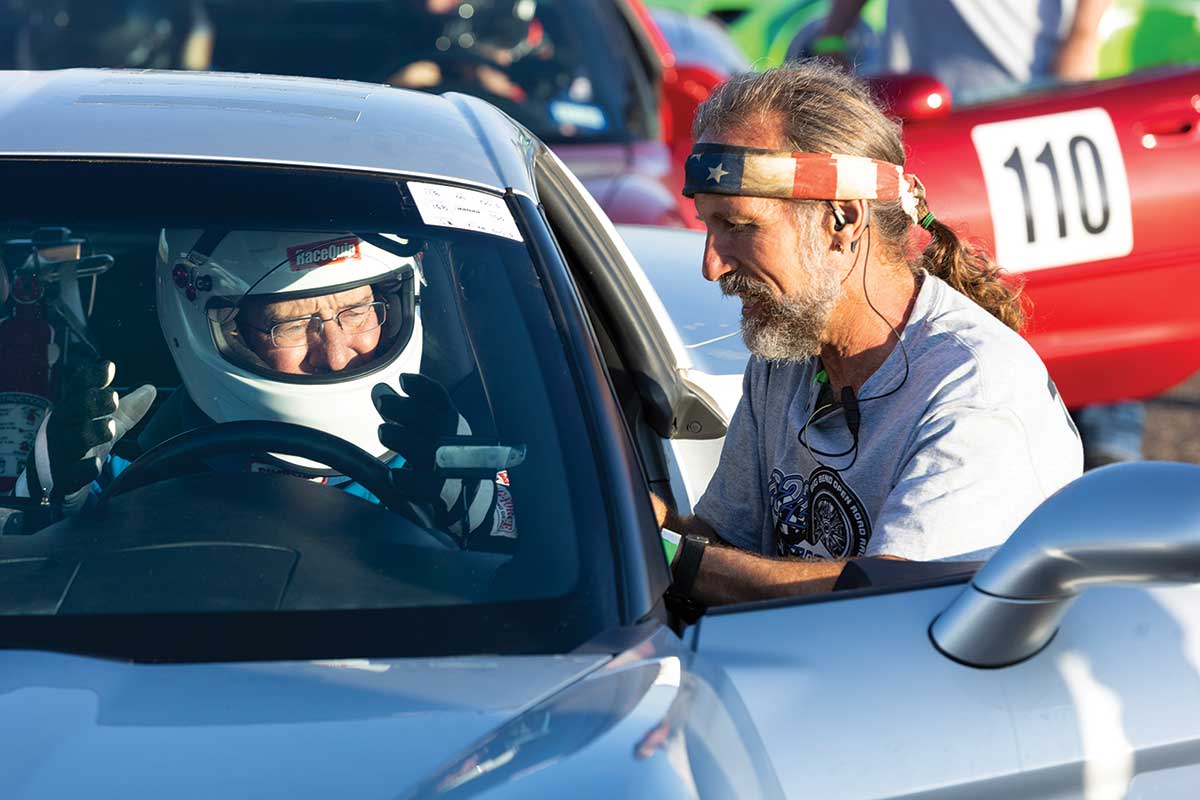
Inspector Joe Henderson helps Bob Bowser with his seat belt.
Erich Schlegel
The buzzard warning ripples through the line of about 160 vehicles along U.S. Highway 285 awaiting the race start. In a few minutes, the first car screeches away.
The Big Bend Open Road Race is the common man’s Indy 500. Anybody with a driver’s license and a properly equipped vehicle can pay the entry fee (which ranges from $650 to $1,050, depending on class) and compete. Most teams will tell you they come because they like to go fast. Officials shut down the highway for 12 hours, and the rubber burns.
This year’s field features a stable of sleek Corvettes, a few Teslas, a herd of Mustangs, some Camaros, Porsches, Miatas and a Mini Cooper—plus a 1962 Chevrolet pickup truck and a 1970 Chevelle.
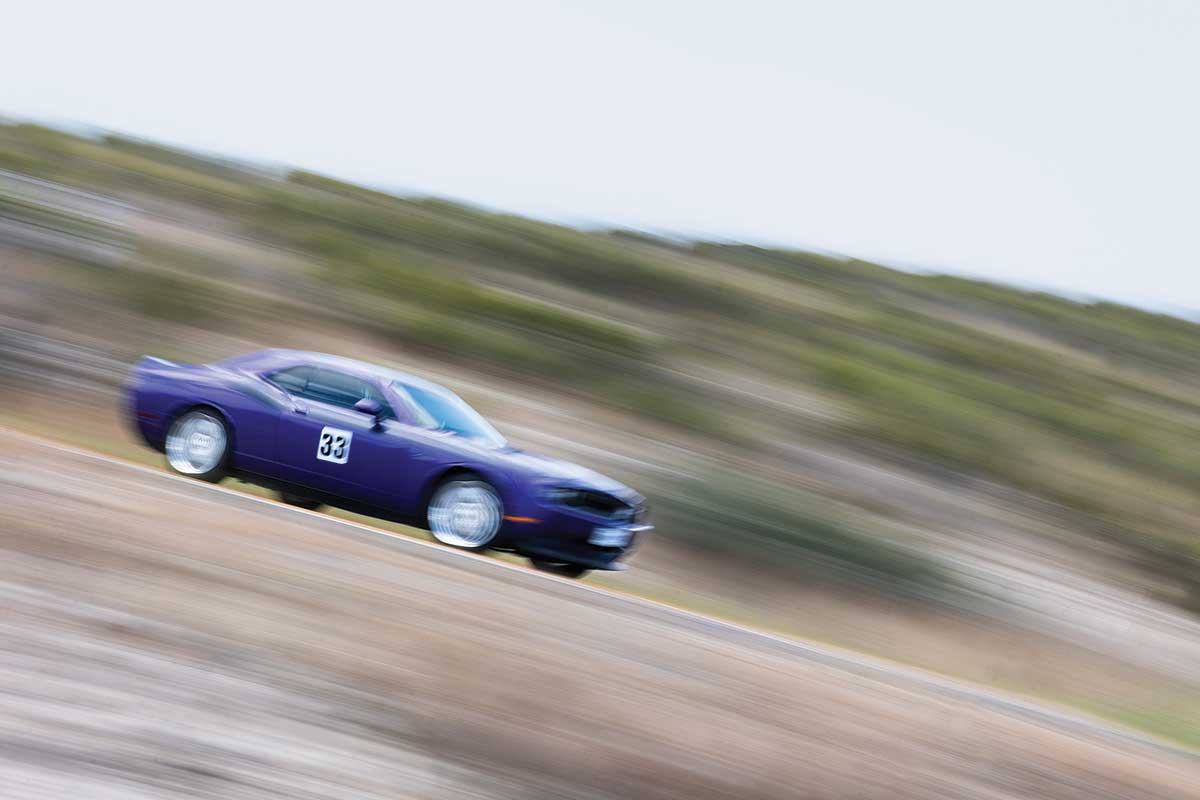
Australians John Binns and Kelli-Ann Robinson fly by in their 2010 Dodge Challenger.
Erich Schlegel
In years past, junkers and rentals have also lined up at the start.
Competitors pick a class based on the speed they think they can average over two runs, a tricky feat to pull off. The fastest car doesn’t necessarily win, except in the “unlimited” division, in which the flat-out fastest driver gets the trophy. In other classes, drivers who come closest to their target average speed take top honors. And drivers can’t slow more than 30 mph below their target speed on straightaways, which prevents them from racing along and then coasting into the finish. The rule is enforced by radar.
The best teams come within a few hundredths of a second of their goal.
“If I don’t giggle and laugh when I drive that fast, something’s wrong,” says Tracy Alexander, who is zipped into a pink and black fire suit as she leans against her 2015 Corvette Stingray, waiting her turn. Participants are required to wear a fire suit, helmet and gloves.
The vehicles take off one at a time, and it takes about three hours to launch the whole field.
Then they do it again for the return trip. “I’ve just always been a speedster,” Alexander says. “My dad had Corvettes when we were growing up, and when you’re behind the wheel of a Corvette, it seems like you should push it a little bit. It’s the thrill of it, really, and the adrenaline rush. Some people jump out of airplanes; I drive fast.”
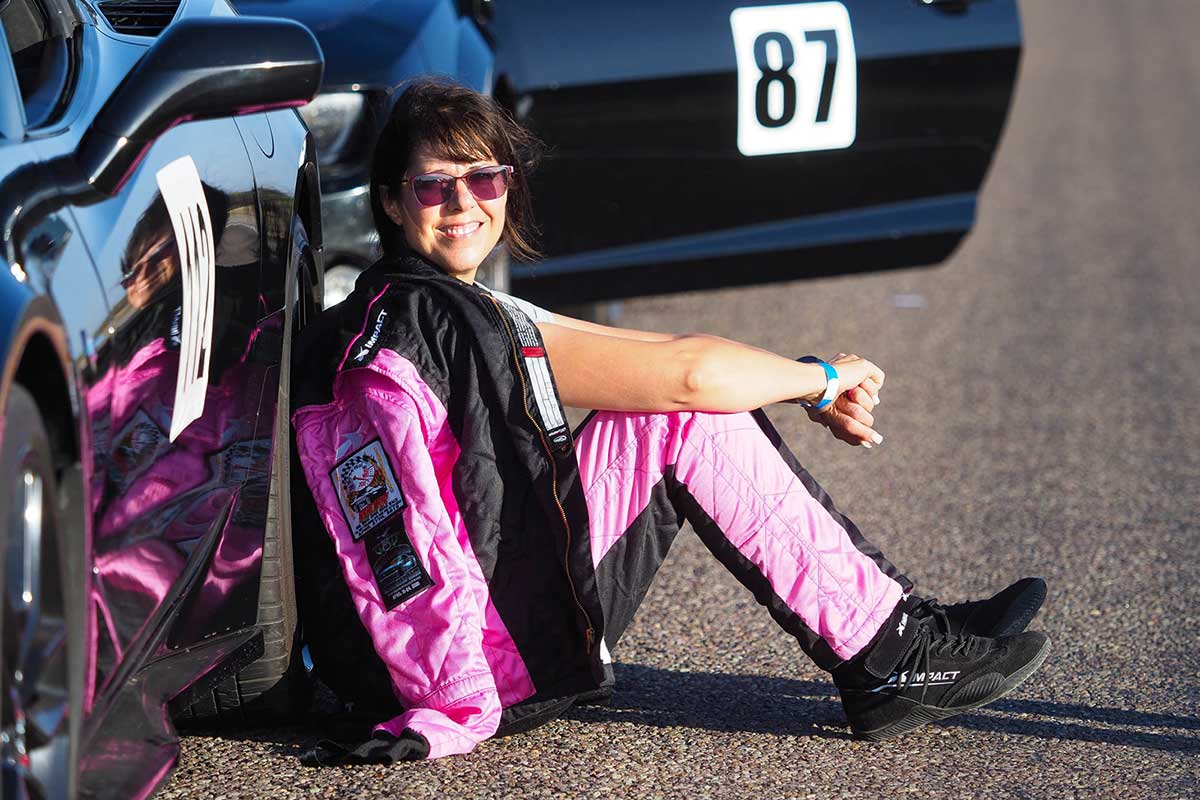
Tracy Alexander leans against her 2015 Corvette Stingray as she awaits her turn to zoom down U.S. Highway 285.
Pam LeBlanc
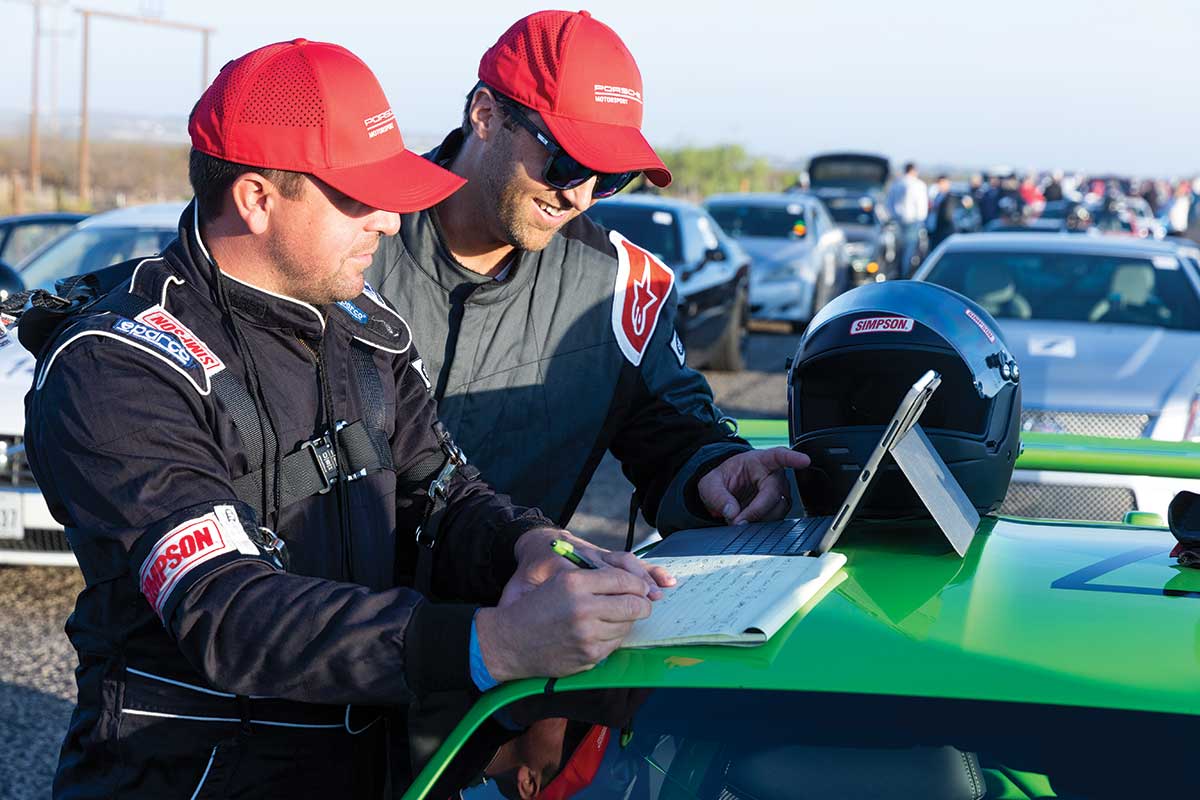
Navigator Colt Whetstone, left, and driver Gene Lehman plot their strategy; they won the 150 mph target speed class.
Erich Schlegel
She and her husband, Fort Stockton Mayor Joe Chris Alexander, used to help behind the scenes at the race, which began in 1998. But when a friend’s partner bowed out a few years ago, she jumped in.
“I always thought it would be fun to race because I like to drive fast, and that would be a legal way to do it,” Alexander says. That first year, she drove the first leg of the race and navigated the second alongside teammate Arno Pitzen of Kingsland. They finished second in their class.
“I’ll never forget that first time,” Alexander says. “You hold your breath, and I said a prayer—‘Lord, let me cross at the right time.’ It’s the biggest adrenaline rush. You’re not racing anyone but yourself. You’re racing your own ability.”
This year she navigates and Pitzen drives. They finish third in their class, just six-tenths of a second off their target time.
Once an annual spring event, an October race was added last fall (October 15 this year). The race is the only one of its kind in Texas, although similar events are staged in Nebraska and Nevada. Registration typically fills up within 15 minutes, and a waitlist 40 deep forms, said race coordinator Crystal Lopez.
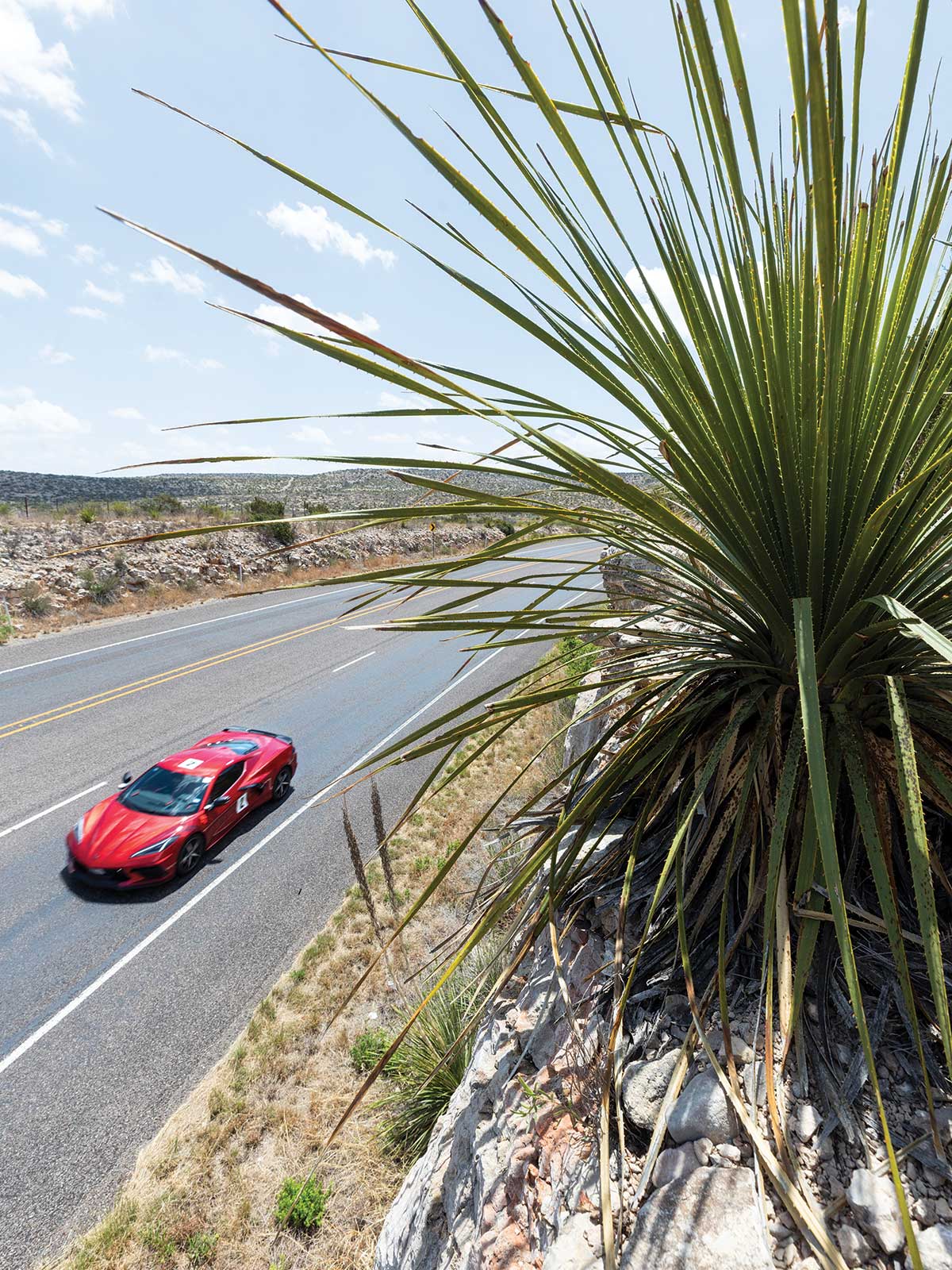
Mike Black of Garland tears through the desert in his 2022 Corvette en route to victory.
Erich Schlegel
“It’s an opportunity for these guys to come out and push close to their limits,” says race director Randy Dustin.
In the week leading up to the race, school kids in Fort Stockton fashion race cars out of cardboard boxes, and drivers parade through downtown in their vehicles. This year organizers added a screening of Cannonball Run, the 1981 comedy starring Burt Reynolds, Farrah Fawcett and Roger Moore.
That very movie once inspired John Binns to get into the sport. The former Texan who lives in Sydney stores several cars in nearby Alpine specifically for the event. He brought Kelli-Ann Robinson with him from Australia to serve as navigator this year while he drives his purple 2010 Dodge Challenger. He’s only here to have fun.
“I just drive as fast as I can, and I turn off the air conditioning so I can go faster,” Binns says.
Some drivers scout the course ahead of time, using old-fashioned tools. Others rely on high-tech gadgets and GPS to hit their targets.
“Everybody has their secrets,” says Travis McRae of Kerrville, a Central Texas Electric Cooperative member. “I like the technical part of it. I can drive anywhere fast, but out here you have to be spot on.”
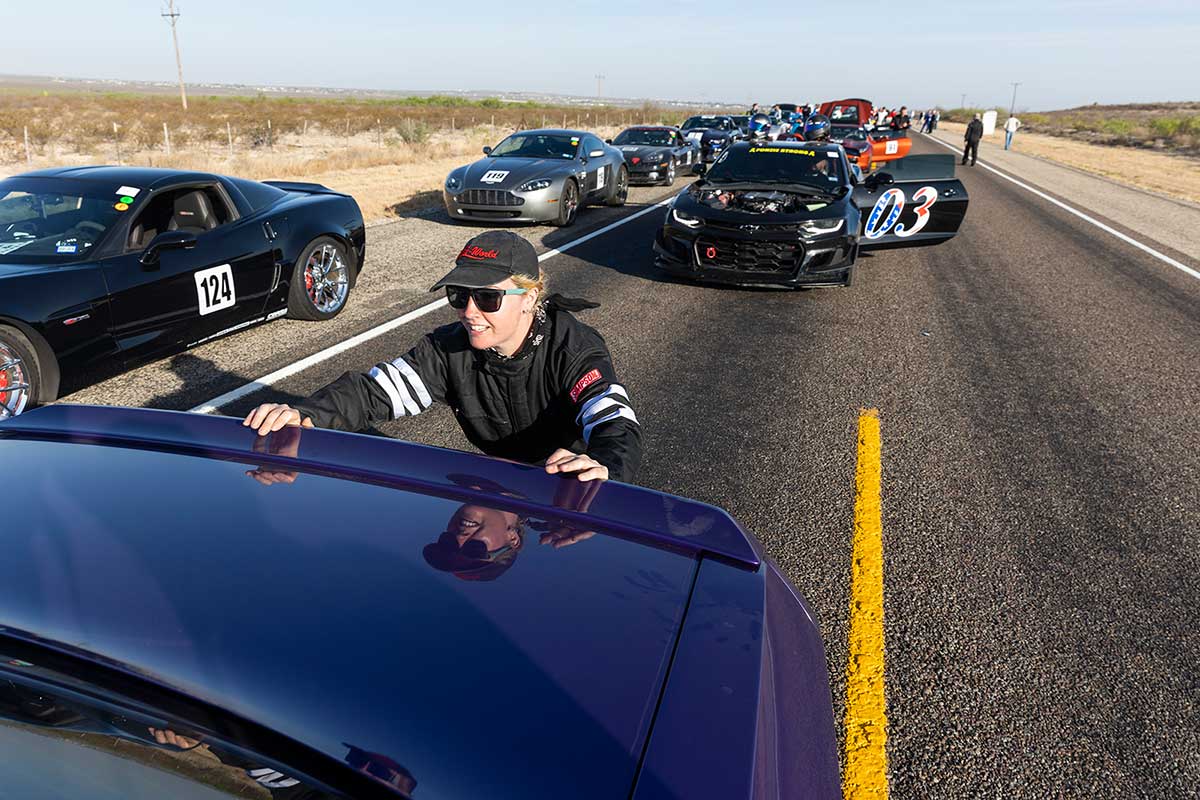
Kelli-Ann Robinson pushes car 33 on U.S. Highway 285 before the morning run from Fort Stockton to Sanderson.
Erich Schlegel
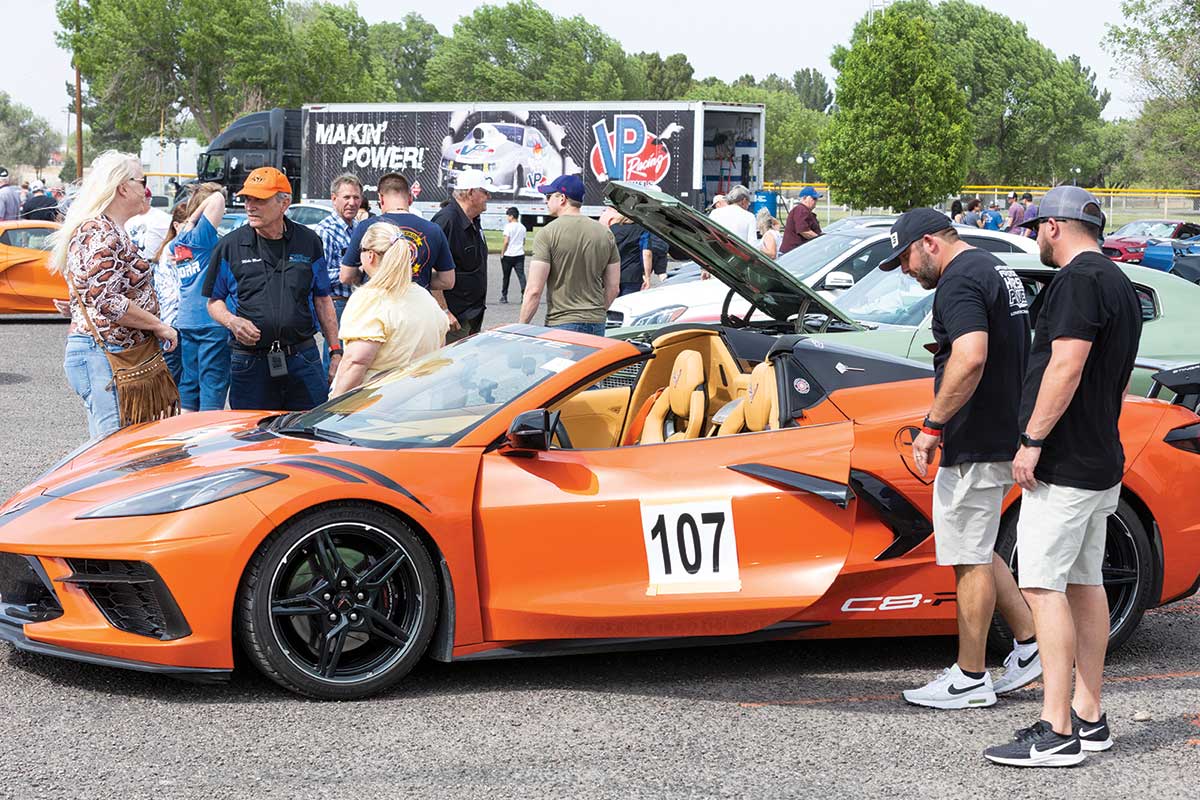
Fans check out the cars at James Rooney Memorial Park.
Erich Schlegel
Charlie Friend, 82, of Pahrump, Nevada, a former U.S. Air Force fighter pilot who has raced in every class and won the unlimited category one year, also does everything manually—punching a stopwatch and scrolling through a paper route chart as he drives the course. “More and more people now use magic stuff, like computer systems,” Friend said.
After this year’s race, teams gather in Fort Stockton to swap stories. A father-daughter duo from San Antonio dances a jig by their car. Sweaty racers eat barbecue from a food truck. Brothers Mike Smith from Blanco and Mark Smith of Longview crack cans of cold beer and hash over their performance.
“We know we were too fast,” Mike Smith says, and race results later confirm they crossed the finish line nearly 22 seconds too soon in the 150-mph class, completing the 118-mile sprint in just over 47 minutes. That doesn’t matter much to him. “All the guys out here have a common interest. We all enjoy tinkering with cars, and this is kind of like a reunion.”
And those buzzards? Friend, the former pilot driving a Cadillac CTS-V, spots some along the course. They don’t cause any problems.
“I just flashed my light and tooted the horn, and they moved,” he says.
